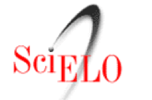Bermejo Pareja, Félix Camacho Salas, Ana Puertas Martín, Verónica Moreno Ramos, Teresa Villarejo Galende, Alberto
Mirrored-self misidentification in a patient without dementia: evidence for right hemispheric and bifrontal damage [artículo] - Neurocase, 2011 - 17(3):276-284.
Formato Vancouver:
Villarejo A, Martin VP, Moreno-Ramos T, Camacho-Salas A, Porta-Etessam J, Bermejo-Pareja F. Mirrored-self misidentification in a patient without dementia: evidence for right hemispheric and bifrontal damage. Neurocase. 2011 Jun;17(3):276-84.
PMID: 20812138
Contiene 48 referencias
Mirrored-self misidentification, often referred as the 'mirror sign', is a delusion characterized by the inability to recognize one's own reflected image, often associated with the intact capacity to recognize others in the mirror. It has been described mainly in moderate or severe dementia, especially Alzheimer's disease. In the few reported cases without global cognitive impairment, right hemispheric and frontal dysfunctions have been described. We report a 90-year-old man with abrupt onset of the mirror sign after a minor right hemispheric ischemic stroke. Neuropsychological testing revealed preserved cognitive capacities, except for mild to moderate impairment of visuospatial skills, suggesting right hemisphere dysfunction. Neuroimaging showed a small right dorsolateral frontal infarct, and bifrontal encephalomalacia, consistent with a past history of head trauma. Scattered ischemic white matter lesions in posterior periventricular regions were also seen. It seems that the mirror sign is a multifactorial phenomenon that usually requires right hemispheric dysfunction (perceptual abnormalities, loss of familiarity) and frontal damage (loss of judgement and inability to correct wrong beliefs). The right frontal dorsolateral prefrontal cortex seems to have a crucial role in self-recognition.
Mirrored-self misidentification in a patient without dementia: evidence for right hemispheric and bifrontal damage [artículo] - Neurocase, 2011 - 17(3):276-284.
Formato Vancouver:
Villarejo A, Martin VP, Moreno-Ramos T, Camacho-Salas A, Porta-Etessam J, Bermejo-Pareja F. Mirrored-self misidentification in a patient without dementia: evidence for right hemispheric and bifrontal damage. Neurocase. 2011 Jun;17(3):276-84.
PMID: 20812138
Contiene 48 referencias
Mirrored-self misidentification, often referred as the 'mirror sign', is a delusion characterized by the inability to recognize one's own reflected image, often associated with the intact capacity to recognize others in the mirror. It has been described mainly in moderate or severe dementia, especially Alzheimer's disease. In the few reported cases without global cognitive impairment, right hemispheric and frontal dysfunctions have been described. We report a 90-year-old man with abrupt onset of the mirror sign after a minor right hemispheric ischemic stroke. Neuropsychological testing revealed preserved cognitive capacities, except for mild to moderate impairment of visuospatial skills, suggesting right hemisphere dysfunction. Neuroimaging showed a small right dorsolateral frontal infarct, and bifrontal encephalomalacia, consistent with a past history of head trauma. Scattered ischemic white matter lesions in posterior periventricular regions were also seen. It seems that the mirror sign is a multifactorial phenomenon that usually requires right hemispheric dysfunction (perceptual abnormalities, loss of familiarity) and frontal damage (loss of judgement and inability to correct wrong beliefs). The right frontal dorsolateral prefrontal cortex seems to have a crucial role in self-recognition.








